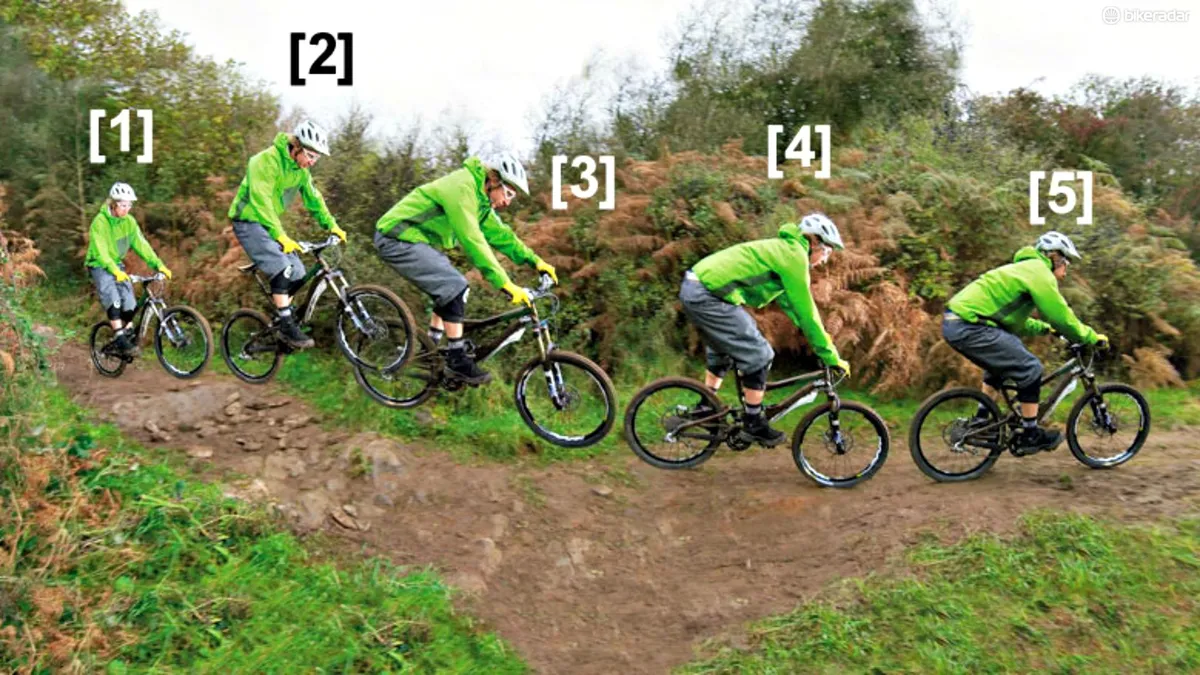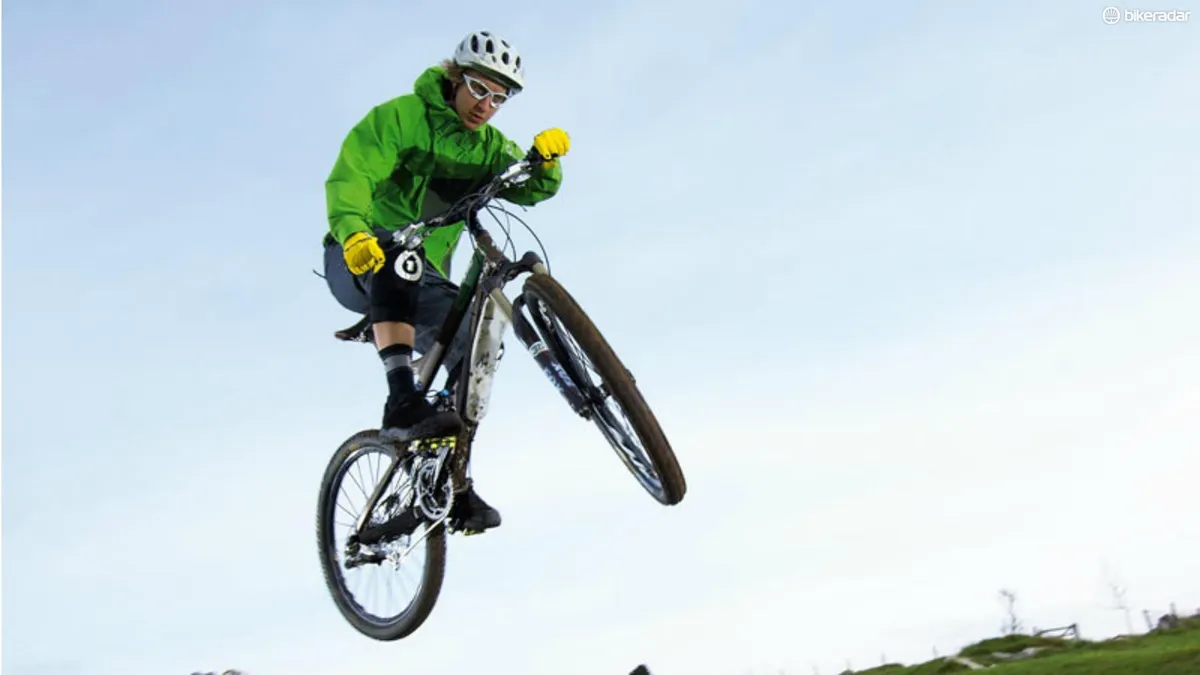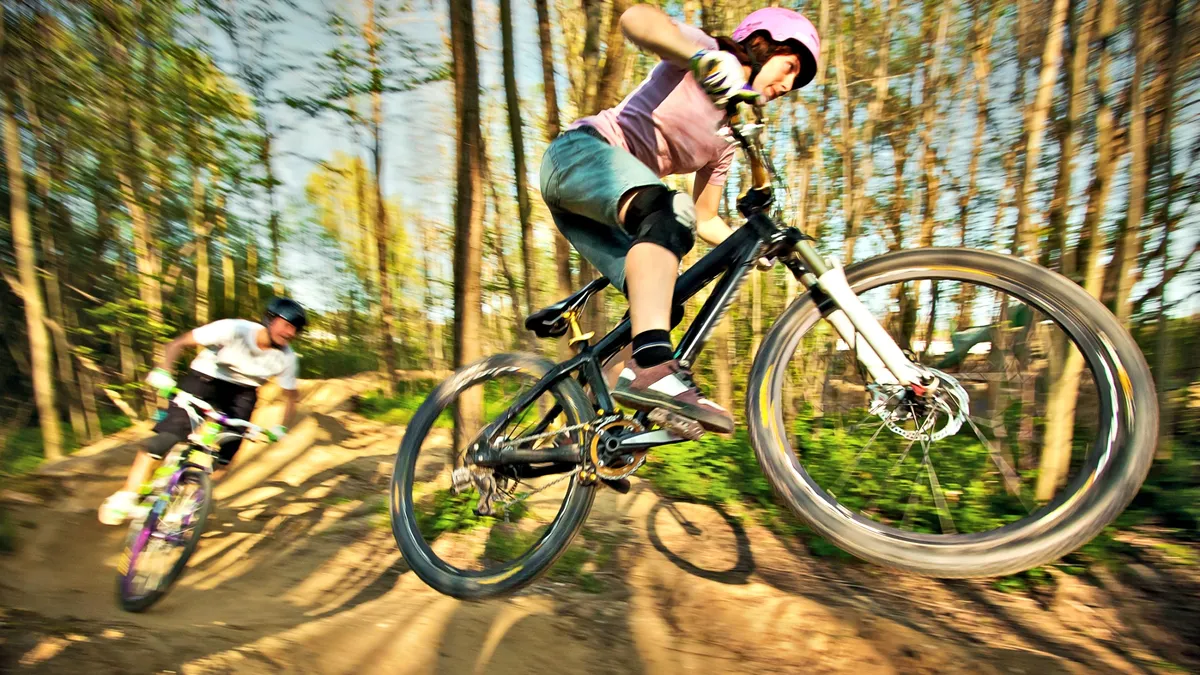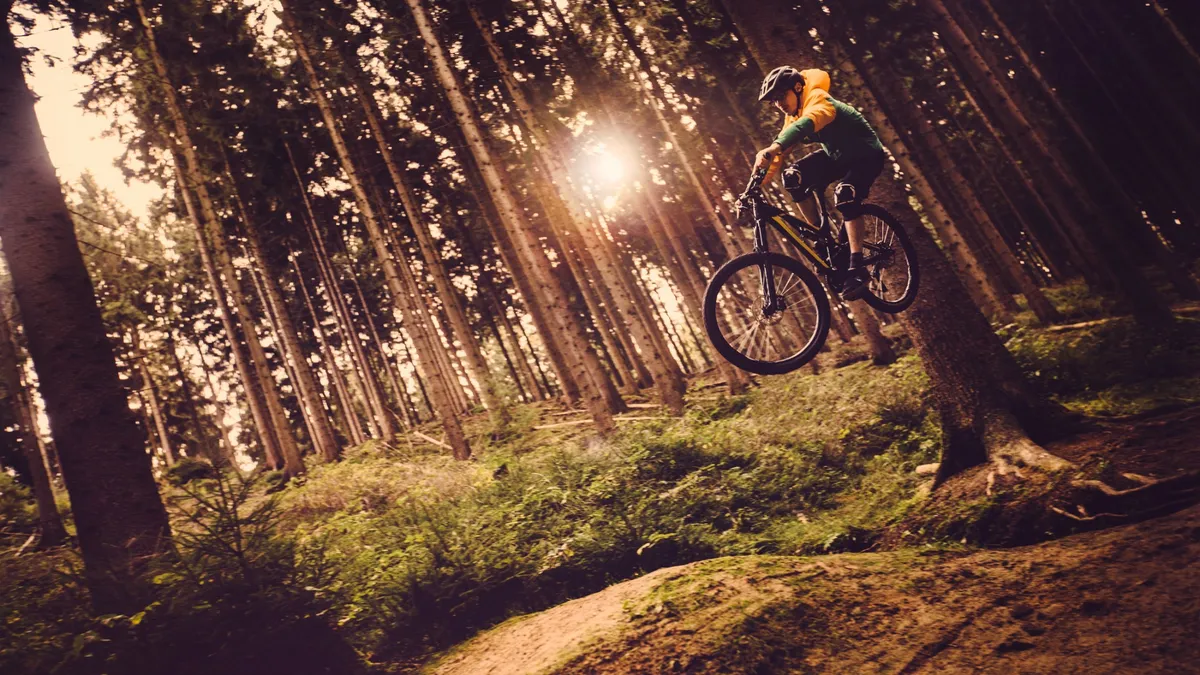Sometimes, when the going gets rough the best thing you can do is avoid it all together. We're not talking about taking a detour, we're talking about clearing the obstacle by taking to the air. Gapping trail obstacles, whether they're rock gardens, piles of roots, or gap jumps, can be the safest way to ride a section... once you've learned the technique, of course.
While it might seem extreme, the best way to ride roots and rock gardens is often by jumping the sections clean or by skimming across the top like a motocross rider.
Riding roots and rocks can be intimidating, especially when they’re wet or off-camber, but the more you shy away from them the more likely you are to slide out. So, as with any move, you must be the boss of the bike and attack the trail. That said, the correct technique is essential if you don’t want a big dentist’s bill.
On a rooty or rocky section, a good rider won’t try too hard to pick out a line; they’ll just check out the entry and exit points and choose a straight line between them. This lessens the chances of the bike wandering about and controlling a bike in a straight line is safer and easier than when it’s weaving from side to side.
A step-by-step guide to gapping trail obstacles

1. Approach
As you’re pelting along the trail towards the rocks, you should have already spotted the take-off subconsciously. Now you need to decide whether you’re going to commit or scrub speed off. Past this point of no return, if you haven't scrubbed your speed you’ll be going too fast to stop. The take-off is approaching quickly, so you should already have spotted the rough area for touchdown.
2. Take off
With your body ready to spring up, lean back to remove weight from the front end and pull up at the same time. As the front wheel leaves the lip, shift your legs to take your weight off the rear wheel. As the rear wheel hits the lip, help it off the ground by scooping it up with your feet. Be ready for it to kick slightly as it pops off the lip.
3. Levelling out
On a tabletop jump, levelling out in the air is helped by the bike wanting to follow the natural curve of the jump, but using roots and rocks to bounce the bike into the air will require fast but subtle weight shifts. As the rear wheel hits the take-off, you should already have pre-empted its path and the saddle will come up to meet you. Ideally, you’ll be hovering over the saddle, putting you in a good place to shift your weight fore and aft should the bike be too nose or tail heavy.

4. Spot the landing
Although you should have already spotted your rough landing area, you need to be looking for an exact spot to land on. If there’s any kind of slight gradient or transition, use it — even the backside of a small rock can be used to lessen the impact on your bike. After a while, you should be able to pilot your bike off a random take-off on to the back of a root the size of a tyre.
5. Touchdown
Instead of waiting for the bike to meet the landing, you have to be active with the bike. It’s a matter of telling the bike where it can land and then landing it. You’ve already spotted your landing, so get the nose ready and pitch in for the smoothest touchdown possible. If you’ve done it right the rear wheel will follow suit, but if you haven’t you’ll get a kick up the arse as the rear end disagrees with your choice.

Gap basics
Tech and prep
Before you can start copying Wade Simmons and start hitting gaps big enough to park cars in, you’ll need to get the basics right. If you haven’t mastered bunny hops yet, you should practice them until you can hop comfortably because they teach you what to do with your weight on the bike. Using roots and rocks to get you airborne uses a similar principle to the bunny hop.
Back to basics
A good bunny hop practice technique is to place a brick on the ground. Use the bounce off the brick to pull your front wheel up and then, as you naturally head over the obstacle, the rear wheel will hit the brick and also become airborne. Back in the day we called this ‘lizard’ jumping, and all the classic events like Cheddar and the Malverns in the UK had lizard long jump comps. Practice this technique until you can use any little rock, curb or twig to get airborne and then you’ll be ready to progress to using it to gap whole sections of trail.
Where to learn
Go to your local trails and find a section that’s littered with roots or rocks. You’ll normally find that the bigger roots are nearer to the trees and that the smaller ones are further away from them. Although the smaller ones are easier to ride over, they’re normally off-camber, and they take you away from the direction you need to go. The bigger roots are too large to ride at with any speed, but they often make for perfect take-off ramps. Rocks obviously vary immensely, but you should be able to find one to use as a take-off and another for a landing. Just scope the line beforehand and you’ll usually be able to find what you’re looking for.

Be in control
Watch the top downhill riders hit the rough stuff and, more often than not, you’ll see two different techniques pop up. Some, such as Steve Peat tend to use line choice, momentum and their huge size and weight to carry speed through the rough stuff. This is a great technique if you’re on a long travel downhill rig and you're a tall rider, but it can’t really be adapted for use on regular bikes, unless you’re exceptionally adept. Riders like Troy Brosnan and Danny Hart gap stuff that can slow them down and watching them fly over sections of roots or rocks flat-out is truly inspirational.
Developing your skills
Once you’ve learnt the basics of gapping obstacles out on the trail, you can take things to the next level by gapping sections on trails you haven’t ridden before. Find a stretch of trail with plenty of rocks, roots and other obstacles and ride it as fast as you dare, letting your instincts and reflexes take over — you’ll be surprised how many of the obstacles you can clear by jumping sections of the trail.
Also, if there’s a really rough section that’s bothering you, there’s almost certainly a way of jumping a large amount of it, even if it means taking off again as soon as you land. Try to imagine a deer skipping through the woods jumping over fallen trees — it doesn’t have a planned route, but it deals with whatever is in its path when it gets there.